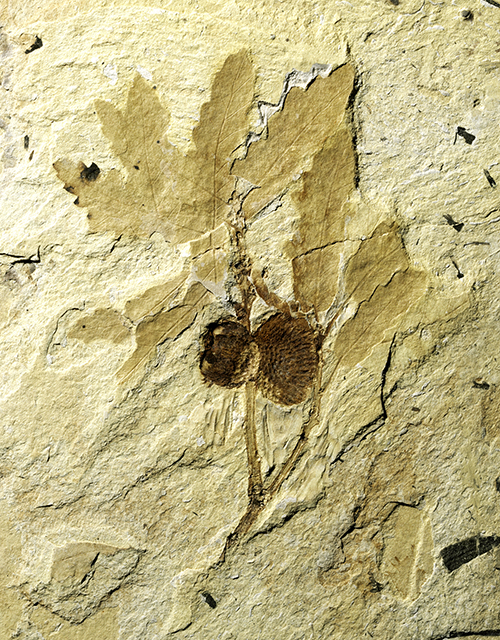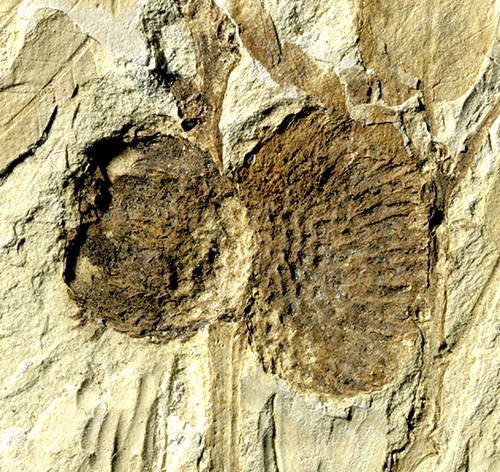June 2025: Leafy twig with fruits of an oak tree
Quercus sp.
Upper Miocene (c. 8 Million Years)
Diatomite Quarry Montagne d’Andance, Saint-Bauzile, Department Ardèche, France
Dimensions of the slab: 23,5 x 22,5 cm
SNSB-BSPG 1985 I 65
The fossil of the month for June is therefore something very special. The slab shows a twig of an oak with attached leaves and fruits from Upper Miocene lake deposits (diatomites) in southern France. Volcanic activity near the lake caused hydrothermal fluids to percolate upwards, and with them large quantities of silicic acid (the material from which the diatoms build their shells) entered the lake. This ultimately led to the formation of diatom ooze, in which the twig was embedded and subsequently almost perfectly preserved. The specimen shown here is the counterpart of a slab kept in the Muséum d’Ardéche in France, and was acquired by the SNSB Bavarian State Collection of Paleontology and Geology in 1985. Although both slabs have been illustrated before, they have only very recently been examined in greater detail. The twig consists of shoots from the current year and the previous year. The shoots of the current year bear the leaves, those of the previous year a pair of sessile or short-stalked fruit cups, which are densely covered with large scales.
The genus Quercus (oaks) today comprises more than 400 species of deciduous or evergreen trees and shrubs, and is one of the most ecologically important and widespread genera of woody plants in the northern hemisphere. A comprehensive fossil record consisting of silicified woods, leaves, flowers, fruits (acorns), and pollen grains demonstrates that this was also the case in the more recent geological past. Around 900 fossil species are attributed to the genus Quercus, many of which are well understood and provide important information about the evolution of these plants and the climate of their habitats. However, the majority of oak fossils are isolated fruits and leaves, which are difficult to assign to a specific group (section) within the genus. Twigs with both leaves and fruits are virtually unknown in the fossil record.
The fossil resembles the modern species Quercus look (Look oak or Mount Hermon oak) from the eastern Mediterranean, and thus certainly belongs to the subgenus Cerris, section Cerris, of the genus Quercus. However, the fossil is not identical to Q. look or any other species, but rather is a new fossil species, which is currently being formally described by us.
Michael Krings (Munich)
Thomas Denk (Stockholm)





